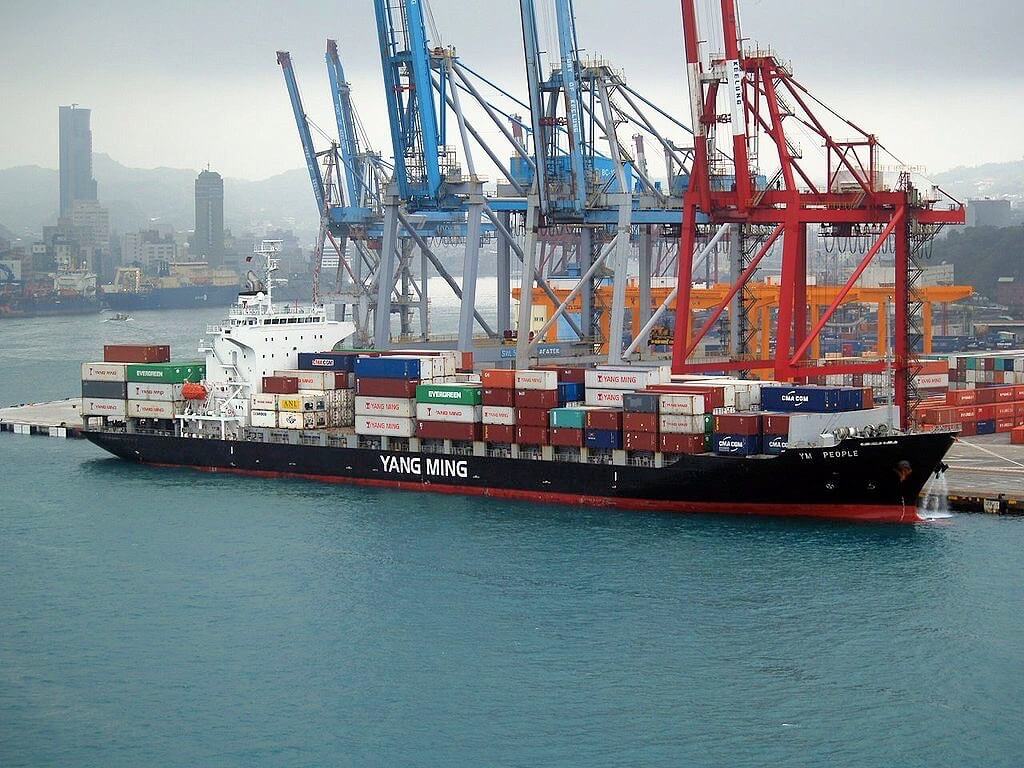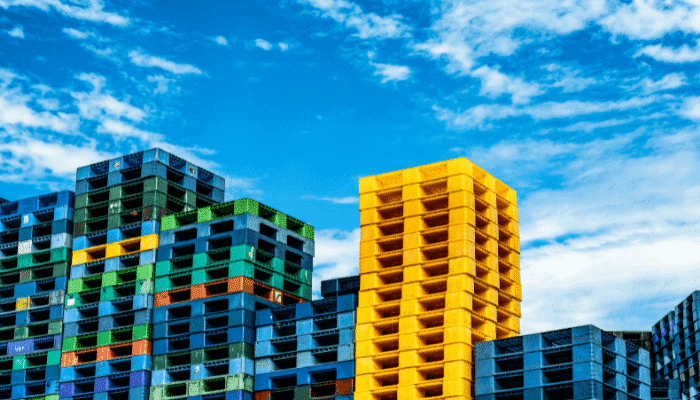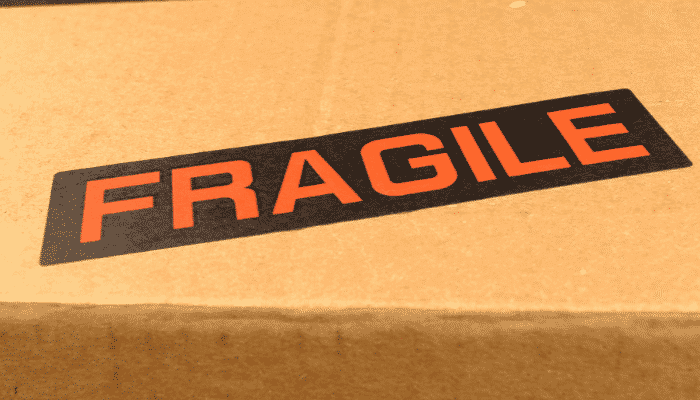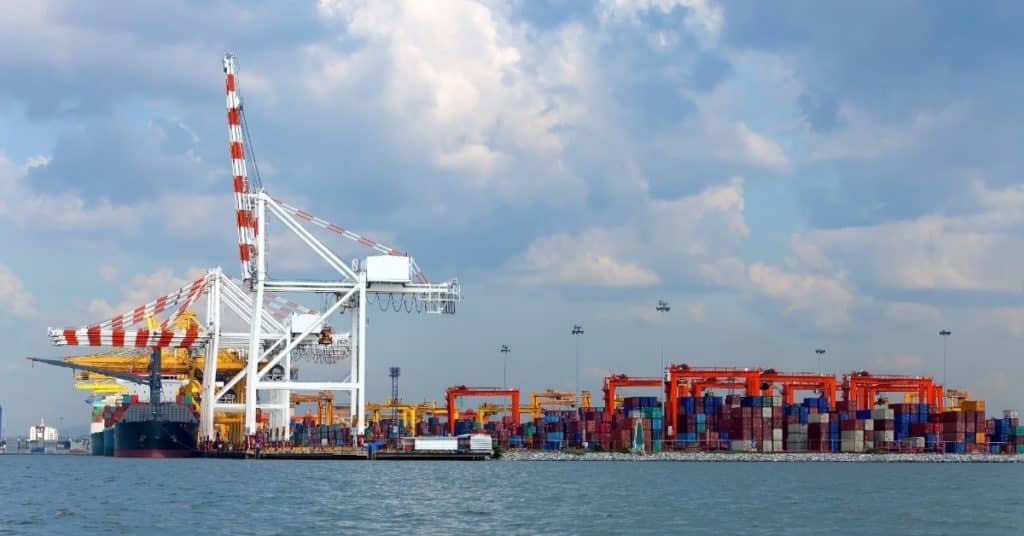When one thinks of shipping cargo by sea it immediately brings up pictures of gigantic freight cranes lifting containers onto giant freight carriers, that traverse the seas connecting different ports of the world. An estimated 85% of global trade is carried out by sea freight.
Large container ships, some that can accommodate as much as 23000 TEUs (twenty-foot equivalent units or 20’ containers) help to move this large volume of cargo around the world.
Remember the MV Ever Given that got stuck in the Suez Canal? It has a length of about 400 meters with a whopping cargo-carrying capacity of more than 20000 containers!
With some exceptions such as certain Out of Gauge (OOG) cargo etc., if all the cargo that is shipped in the world is by containers, how does one ship cargo that comes to less than a container load (LCL)?
A general answer to this would be – by container, once again!
 However, these less than container loads are consolidated with other similar LCLs and packed inside a container to form a full container load or FCL, and that is how we see the container-laden vessels going about!
However, these less than container loads are consolidated with other similar LCLs and packed inside a container to form a full container load or FCL, and that is how we see the container-laden vessels going about!
Groupage is the activity whereby the groupage operator consolidates several LCL cargo for shipment as full container loads.
Upon reaching the destination port, these LCL cargoes are unloaded and segregated by the operator for delivery to their different customers or a single customer after completion of the port and customs formalities. This process is also known as Consolidation.
Documents Required for Shipping LCL
Are the documents required for shipping LCL different from what is required for an FCL? The answer is No. Almost all the documents that are required to ship cargo as FCL are required for LCLs too. In general, they are:
Bill of ladingCommercial invoicePacking listCertificate of OriginDangerous cargo certificate (if required)Insurance certificate
Packing Requirements for LCL shipments
Less than container load shipments need extra care while packing and labeling. This is because they are transported with several other small shipments. It may also involve multiple handling. Unless the packing is durable there are chances of damage to LCL cargo.
Normally, cartons made of corrugated cardboard are used to pack the cargo. Depending on its nature, shockproof packaging materials such as packaging cushions, bubble films, etc. are also used while packing to keep the cargo safe.
Such packed cartons are normally stacked on wooden pallets following the shipper’s instruction on the HI/TI. We will look at HI/TI later on in this article.
Pallets
Pallets are usually made of wood. Plastics or recycled materials are also used these days for the manufacture of pallets. It is a small platform on which goods can be stacked neatly. This is then shrink-wrapped (using a plastic stretch film) making it more secure for transport. Other than helping to hold the cartons together, shrink wrapping helps to protect these goods from any accidental spillage of liquids or moisture.
Warehouse and logistics MHEs (Material Handling Equipment) such as forklifts or pallet jacks can easily lift and place, or remove such pallets from their storage racks or intermodal freight containers.
Pallets make packing, handling, and transport of small cargo more orderly and secure.
The two common pallet models used are the Standard wooden pallets and the Euro pallets. While the standard wooden pallet measures 48” X 40” the Euro pallet has a dimension of 47.24” X 39.37”. There are several other pallets of different sizes available in the market. However, the ISO (International Standards Organization) has limited the different sizes to 6 to avoid confusion and ambiguity.

A standard pallet can hold about 1000 kilograms (1 ton) or 1.8 cubic meters (CBM) approximately.
Wooden pallets need to be heat-treated or fumigated at regular intervals to prevent pests and disease-causing organisms from being transmitted through them.
What is HI/TI?
HI/TI is a common reference in logistics when it comes to configuring pallets. In some places, it is known as TI/HI.
HI/TI or TI/HI is the number of cartons that can be layered and stacked safely on a pallet. HI is the number of layers of cartons on a pallet while TI is the number of cartons on each layer. HI is the height of the pallet in tiers or layers and TI is the number of cartons per tier or layer.
It also shows the total number of cartons on a pallet. Let us take a simple example here:
HI (number of layers or tiers on a pallet): 8
TI (number of cartons in a layer or tier): 10
Total number or cartons on the pallet: 8 X 10 = 80
The HI/TI is critical for the stability of the pallet. This should be followed correctly while building a pallet load.
Labeling LCL Cargo
Another most important requirement is labeling. Labels with clear handling instructions and the address of the consignee ensure that the cargo reaches the correct address safely and is not mixed up with others.
Instructions help the loading and unloading staff to handle the LCL accordingly. Certain goods may require to be kept the ‘right side up’ always.
Fragile goods will have strict stacking limitations and instructions. Such cargo has to be always kept on top of other more-heavier cargo. The right instructions help to prevent damage during transport and handling.
Labels should be affixed on the cargo before shrink wrapping so that the shrink-wrap acts as additional protection for the labels from peeling or getting damaged.

Container Freight Stations
This is where your LCL cargo is taken to once it is picked up from your warehouse by the groupage operator or freight forwarder. Sometimes, depending on the shipping agreement between the buyer and seller, LCL cargo is packed and delivered to the CFS by the shipper (seller).
Container Freight Stations (CFS) are warehouses or yards where cargo from several different shippers is consolidated or deconsolidated. It can be considered as a staging area just before loading the cargo on board a vessel, as in the case of exports, or delivery to the customer, as in imports.
Container Freight Stations handle both full containers as well as LCL shipments. LCL shipments that are consolidated are for export while LCL cargoes that are received (imported) are segregated and prepared for delivery to their customers. Customs clearance and other procedures normally take place inside the CFS that are owned by the shipping line or by the terminal.
Container Freight Stations are normally located inside the port terminal area or close to it. The general services provided by CFS are drayage, movement of containers, stuffing and de-stuffing, storage, stacking, etc. Fees for these services are charged based on cargo volumes.
LCL shipping is cost-effective and can be tweaked according to the shipping needs of an organization. As soon as the goods are ready it is good to go.

However, some points that one should bear in mind while shipping LCL are as follows:
The shipper cannot decide the other goods with which their LCL cargo should be transported. The LCL cargo operator will want to fill a container to its optimum capacity at the earliest and get it shipped. They may not exercise caution while grouping the different goods and as such, there is always the danger of incompatible goods being put in the same container.
An example for this would be when a certain strongly scented product is loaded along with food items in a container. A strong smell inside the enclosed space of a container would easily get on to the food items making them inedible.
An example for this would be when a certain strongly scented product is loaded along with food items in a container. A strong smell inside the enclosed space of a container would easily get on to the food items making them inedible.
Also, any delay on account of a single LCL shipment inside the container, such as due to wrong customs documentation, etc., will delay the rest of the cargo inside the container.
Source: Marine Insight


